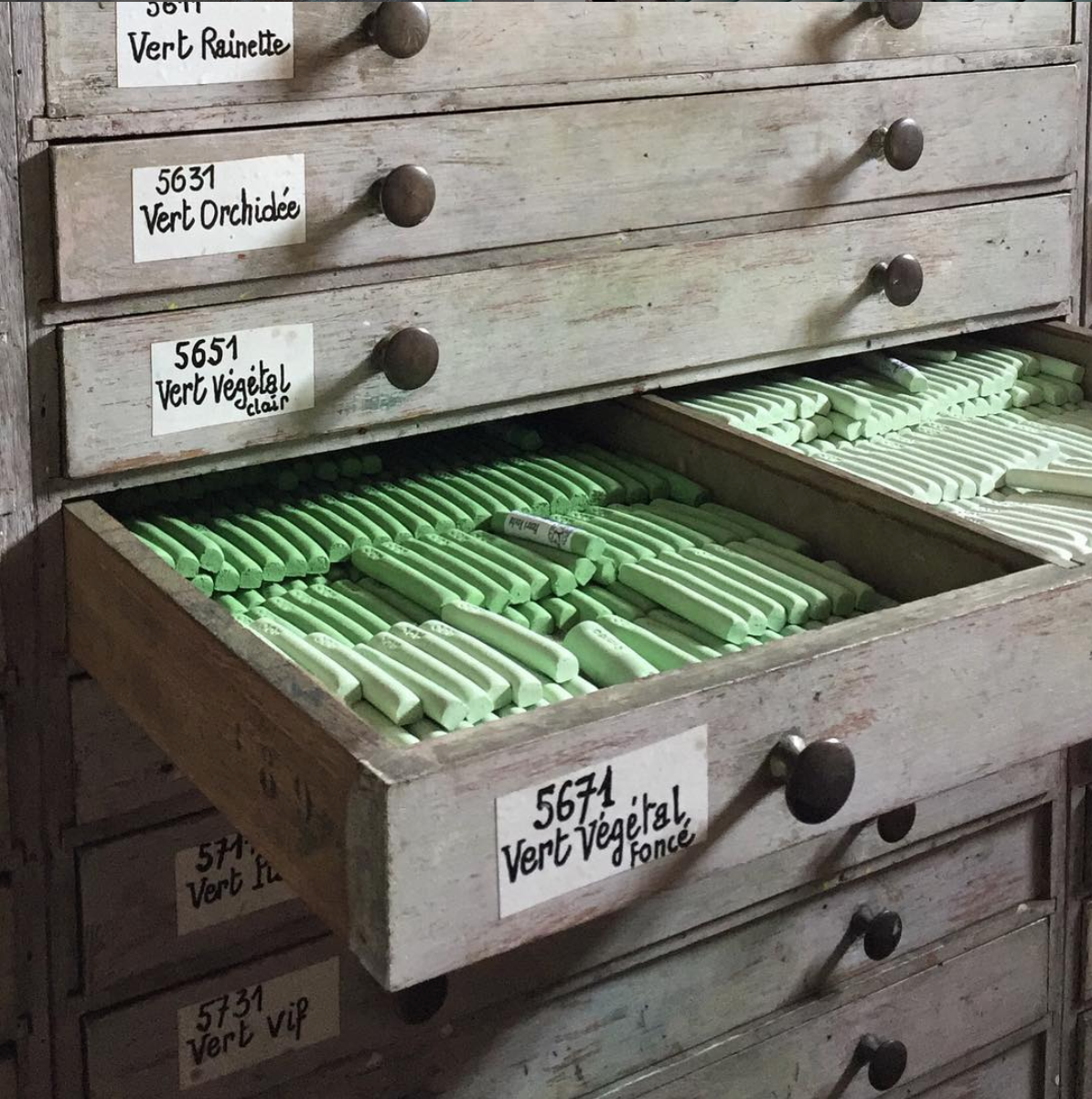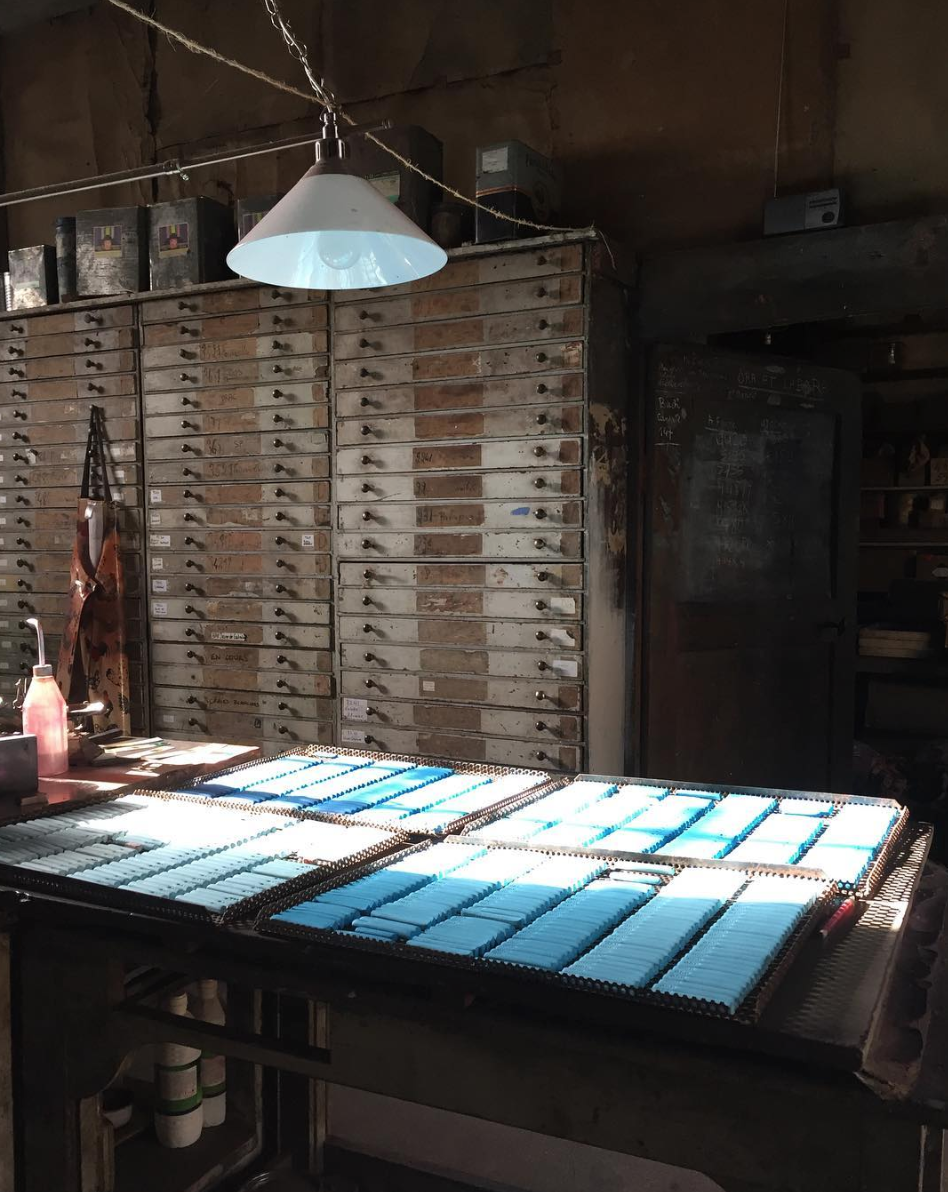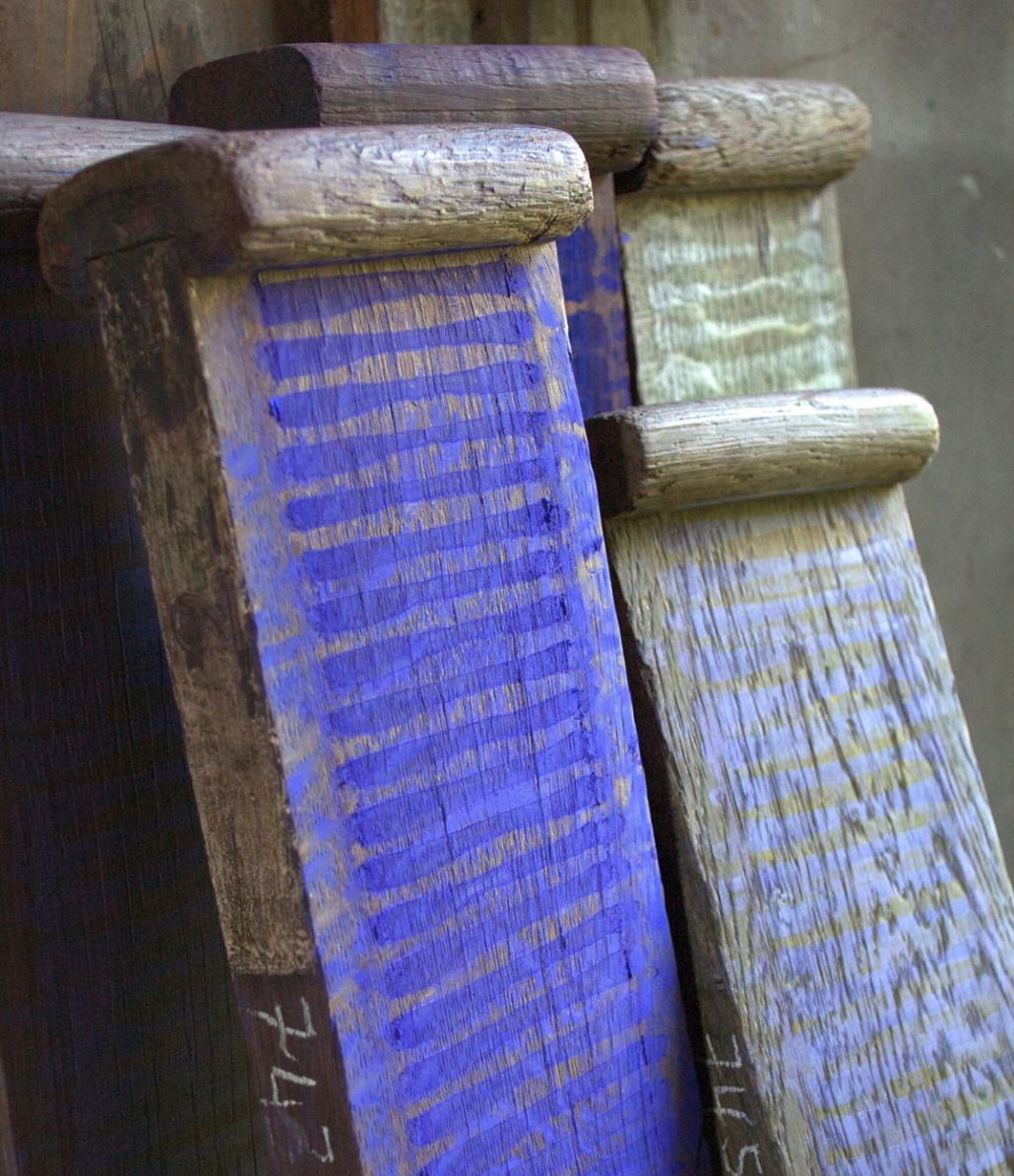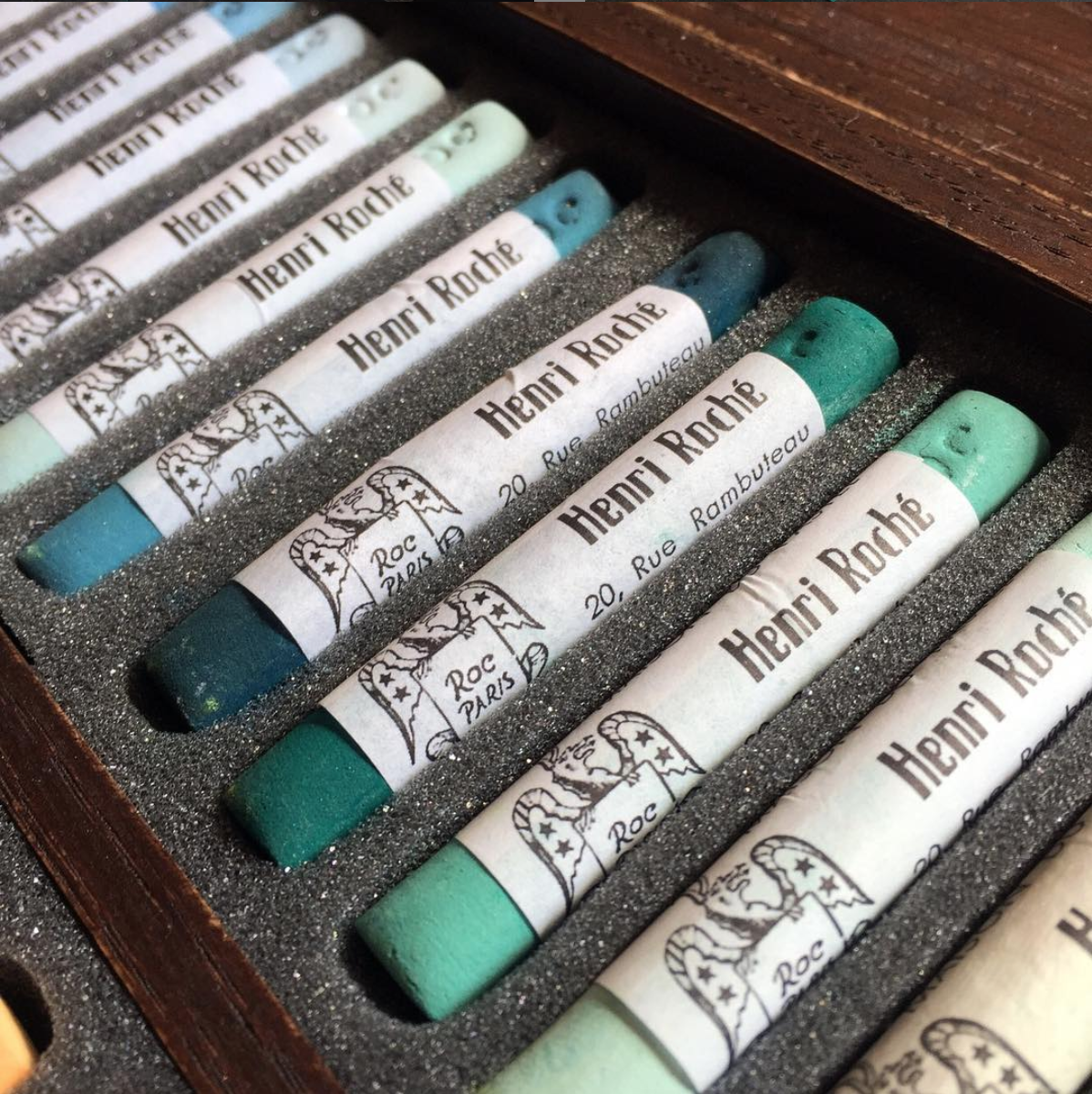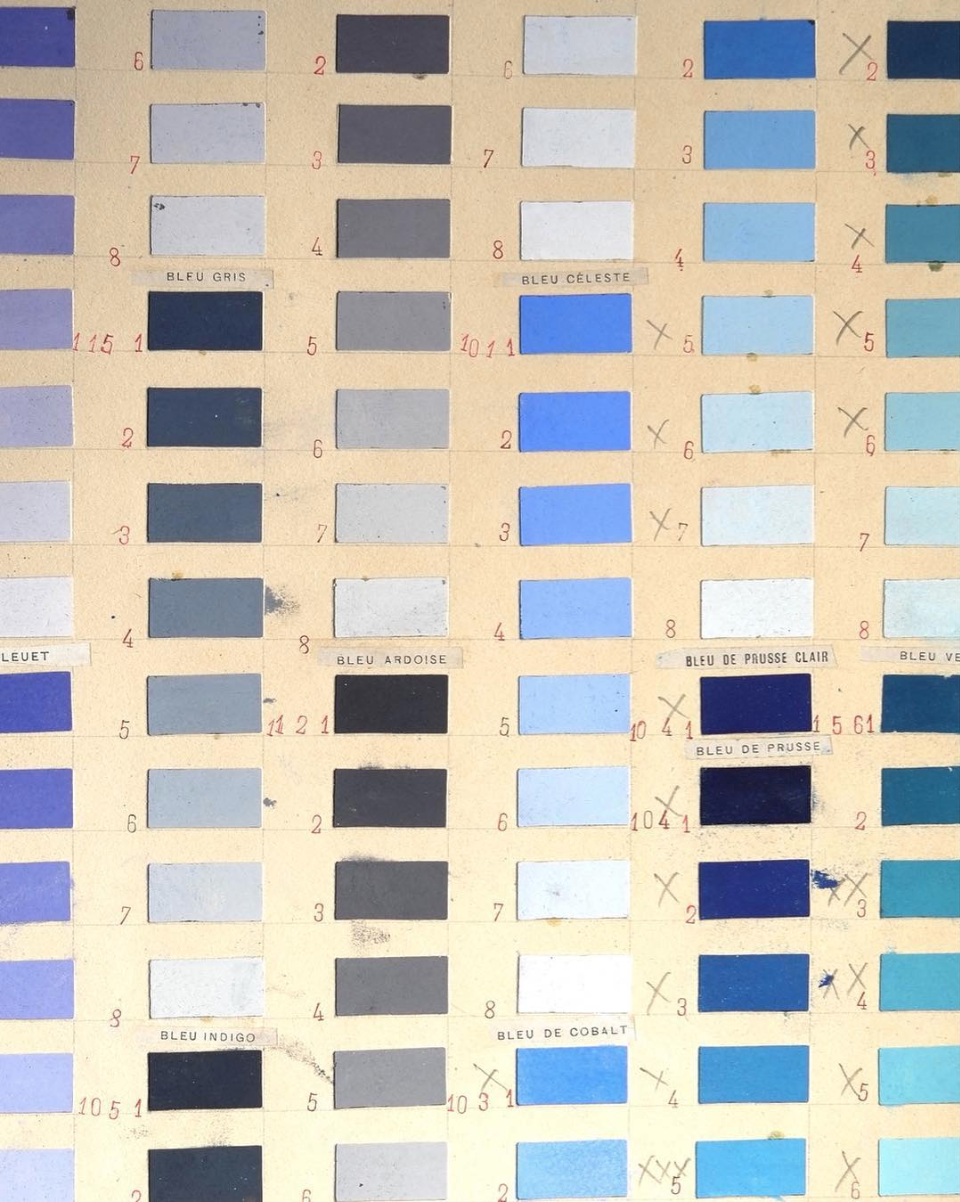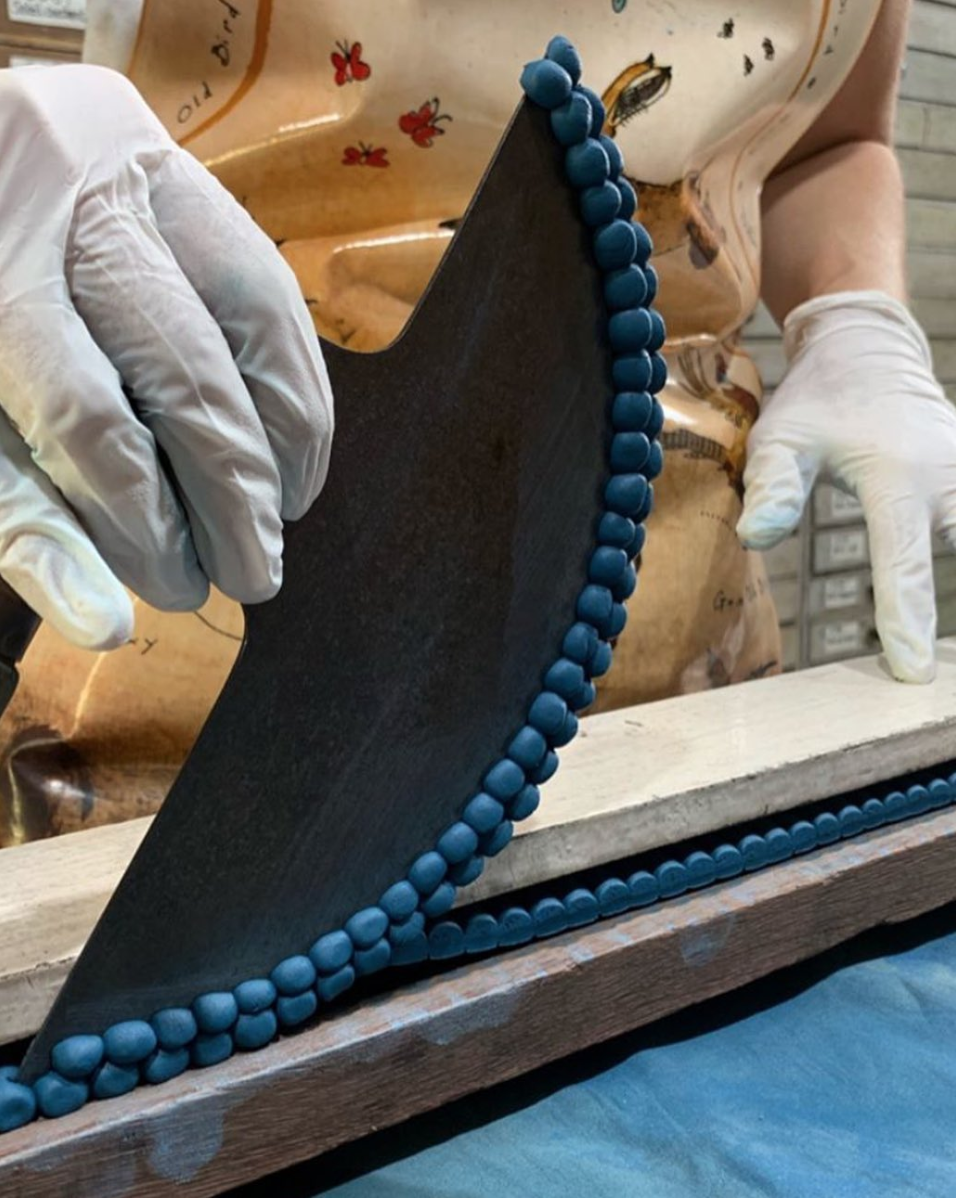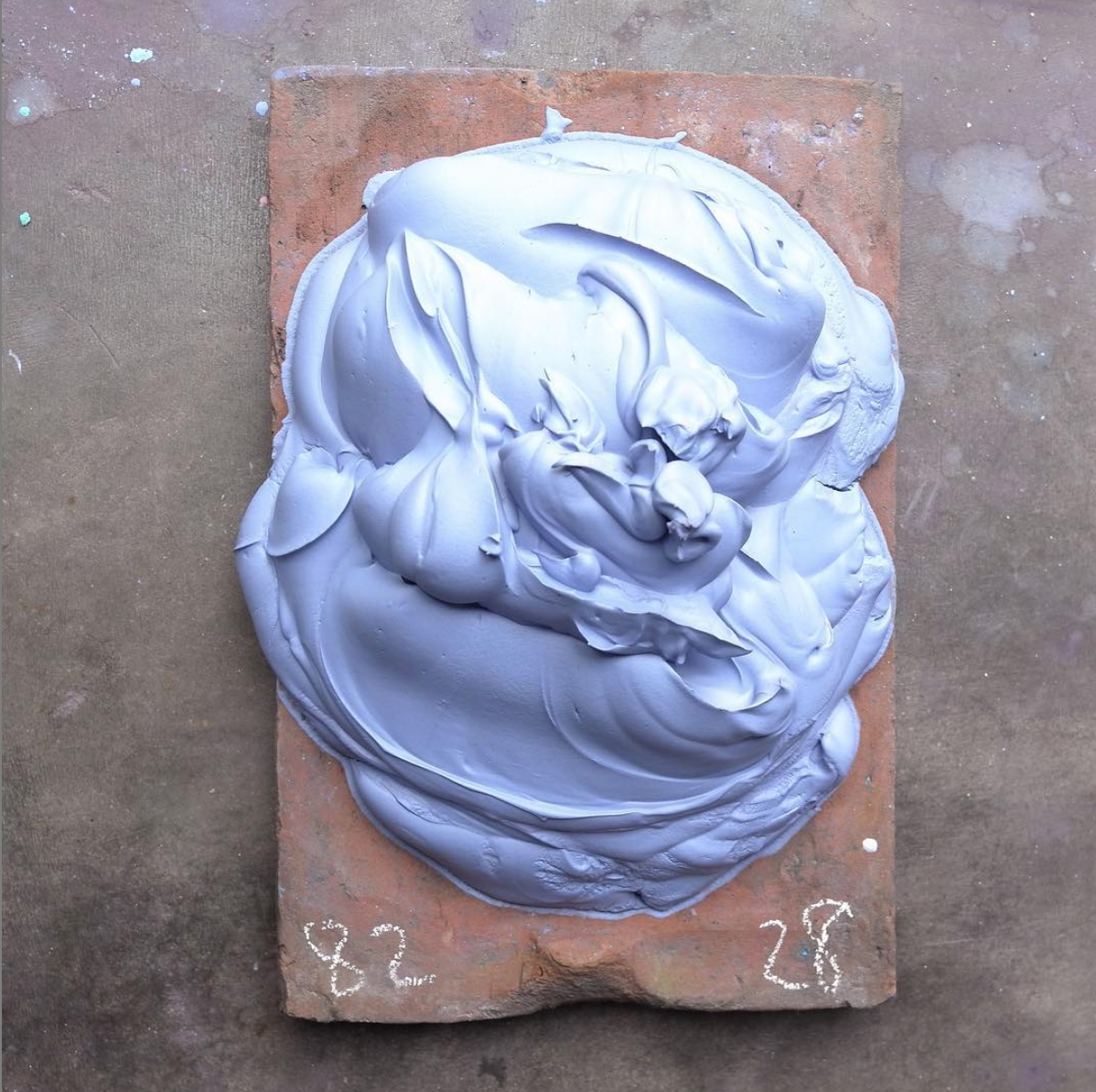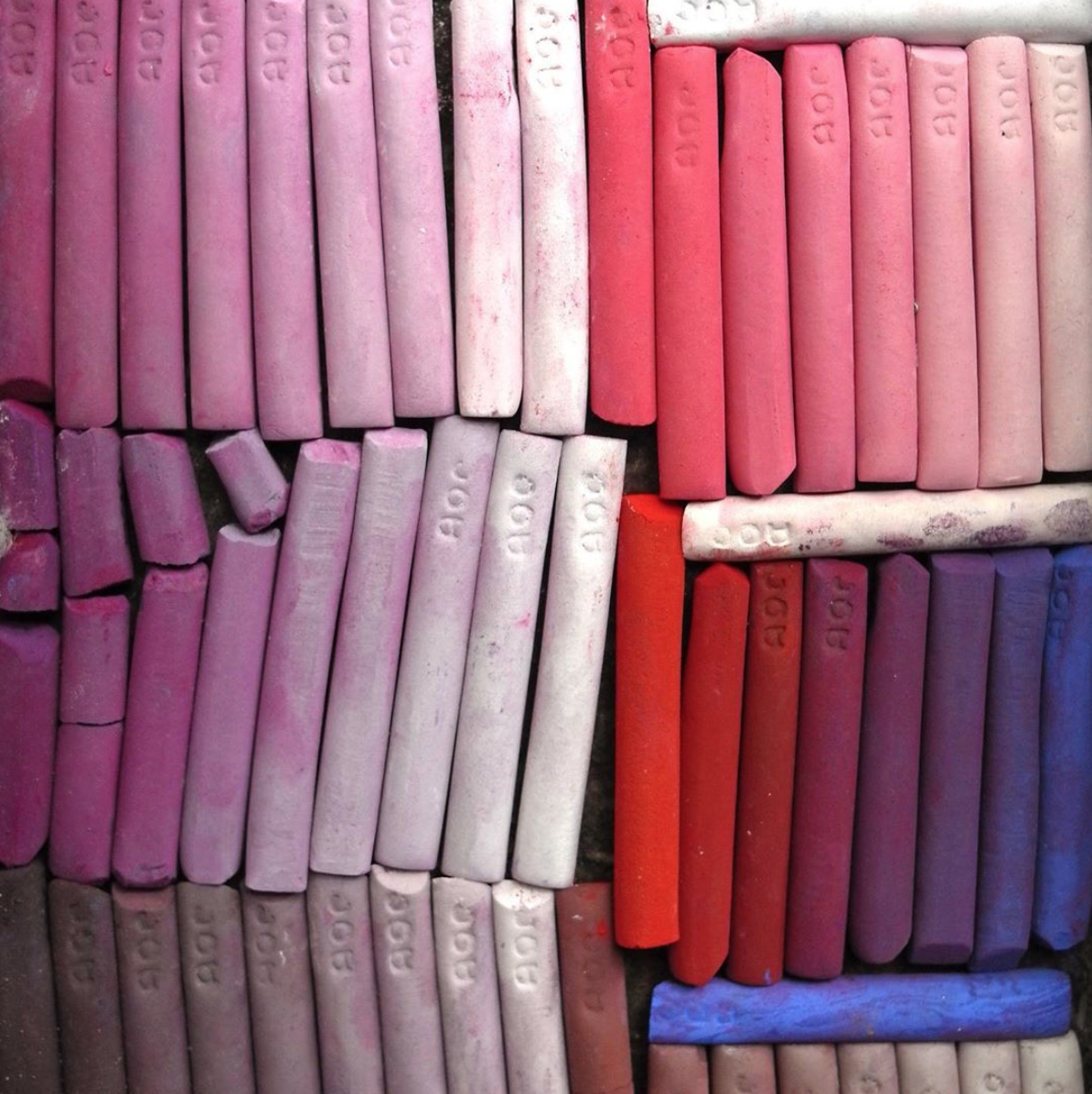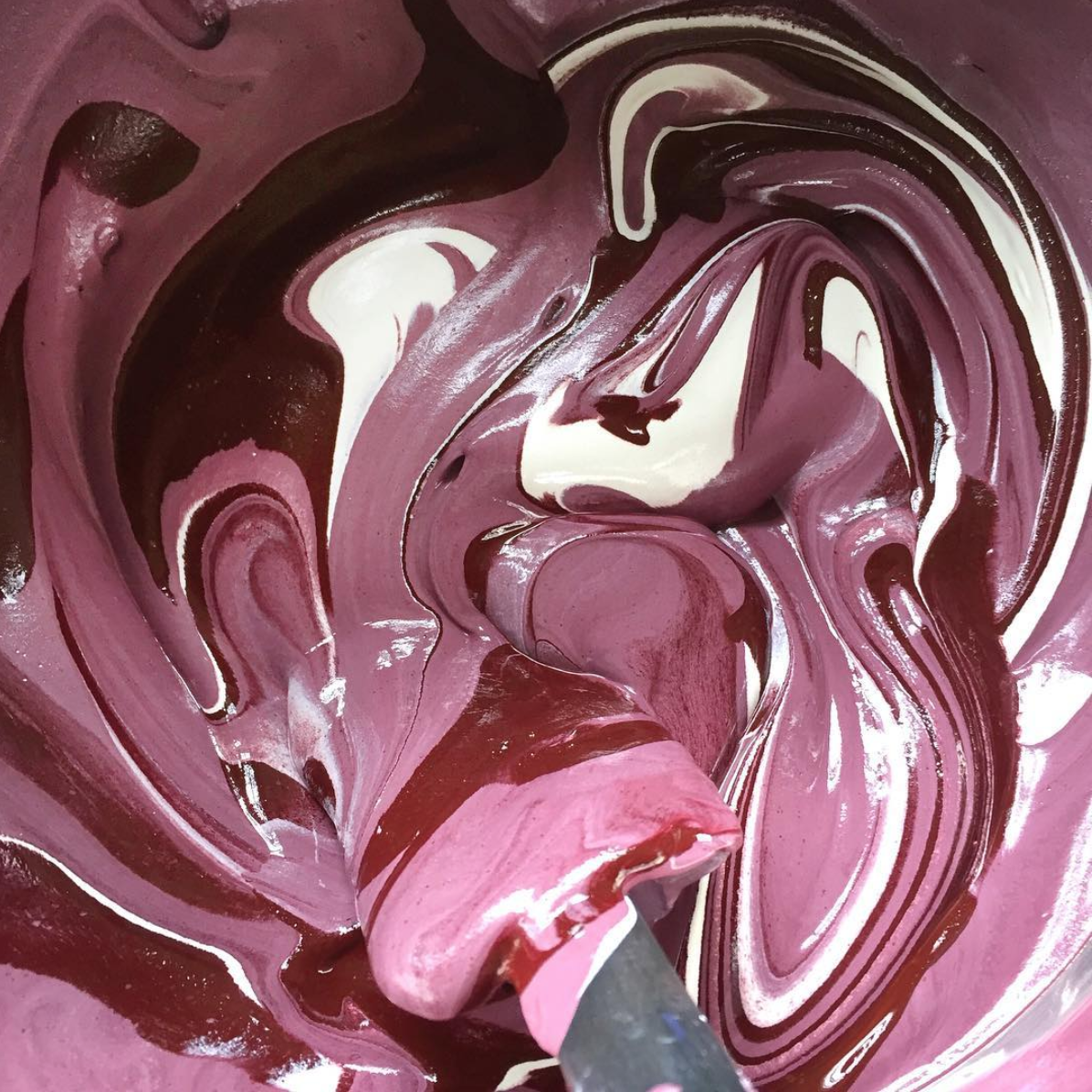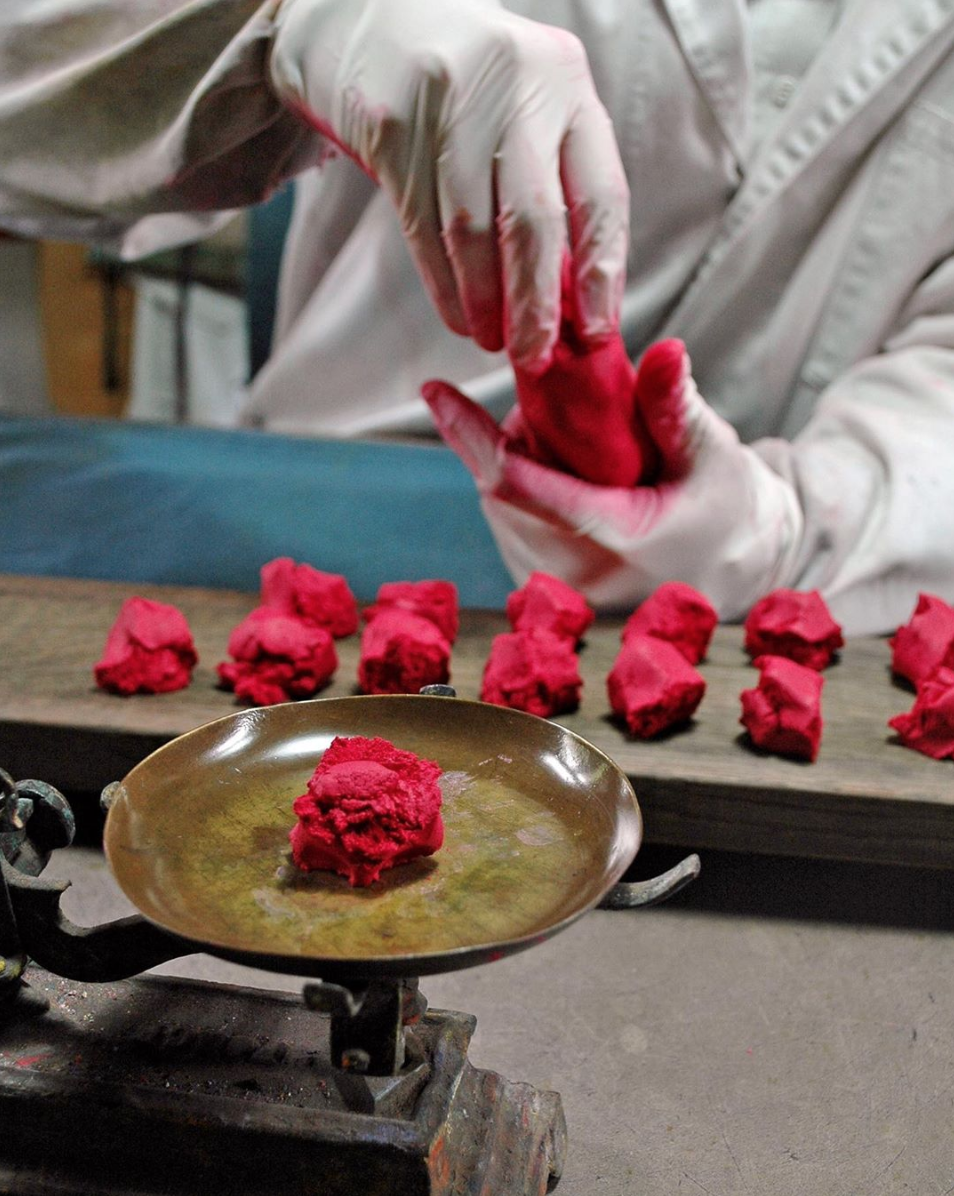Color & Pattern Interview Series: La Maison du Pastel
La Maison du Pastel
I have traveled to over 52 countries for trend research from Kyoto to Jaipur, Buenos Aires to Copenhagen. Over the years, I have seen and stumbled upon some amazing boutiques, restaurants, designers, etc. I have been asked about my favorites so I am starting a Color & Pattern interview series as a way for me to feature some of these people and places I have found, to give a glimpse of the behind-the-scenes, but to primarily focus on (surprise!) color and pattern.
Kicking off this new series I interviewed a company who makes colors for a living, La Maison du Pastel. They are the oldest pastel manufacturer in the world, with a rich history starting in the early 1700’s. To this day they continue to make each pastel completely by hand using centuries old tools and techniques. Today, they currently have around 1,450 colors for sale and continue to experiment with new pigments. This past spring I was lucky enough to visit their atelier (only open in the afternoons on Thursdays) and fell in love with their story and the world of color they have created. The quality of the pastels are incredible - the colors are so rich and vibrant when put to paper, it’s as if you can feel the history and passion that goes into making them. Enjoy the interview below!
1. Why do you keep making the pastels by hand after all these years? For example, is the quality or color better due to this process or is it to keep history alive?
By hand-rolling the pastels, we are most notably able to charge our pure colors with an exceptional concentration of pigment. The more pigment involved, the more likely a pastel paste is to be difficult to manipulate in general, let alone put through a machine such as an extruder. There are a few colors in particular that are very very difficult for us to produce (our exceptionally dark 9181 Extra Black and the metallics), but we manage due to our patience in manipulating these sometimes awkward textures.
We do also love our old, simple tools and methods that much more because they still work like a charm!
2. How long does it take from start to finish to create a pastel?
The easiest way of answering is to take the example of when we make a new color range for the first time. Before anything, there is the time needed to develop a formula, which could be a matter of hours, days, or even years if we don't have the right pigments. Once a formula is ready to be scaled up, the whole process of weighing and grinding the color and (most commonly) white pastes, making the nine-step gradation, and rolling the nine "tiles" (about 80 sticks each) takes around a week. The sticks air dry for around a month, depending upon the pigment composition and season.
3. You posted a photo of new colors you are testing out. Can you give any insight into what all of the new colors will be? Or is there a specific color palette you are currently trying to create?
We're actually in a rather fertile period for making new colors: Margaret is hitting her stride in formulating; our recently renovated atelier makes the fabrication process more efficient than ever; and the summer months are always slow sales-wise so we have ample free time to develop.
Week by week we are just making the colors we want to, aware that all the options we have on the table will strengthen our range as a whole. We'd say they primarily consist of neutrals, colorful greys, or subdued primary-like colors (to give us a bit of pop once in awhile.) We created our 4270 Indian Yellow during a heatwave; then came thunderstorms and we responded with the 5920 Storm Green.
4. Where do you look for inspiration to create new colors? How long does it take to get a new color just right?
Nature is and has always been an important source of inspiration for our pastels, but so is technology (new pigments) and the interactions we have with artists at our shop, who indicate where our range may be lacking. We recently added a new source of inspiration: a watercolor color chart from the 1840s that we have hanging prominently in our workspace (a souvenir from our past.) It has inspired us to play with the idea of historic colors (Indian Yellow, Stil de Grain, Dragon's Blood) and we are now working on how to translate those hues into our pastels.
The more colors we make, the easier it is to judge how new colors should fit. When we remake a color from our historic range, we compare our tests to reference collections from the 1910s, 1930s, and 1980s to get a better feel for our options (and the overall spirit of the color), and ultimately go with our gut.
5. Is there a part of the process of making the pastels that might surprise the reader to know? Or a fun fact about the company?
There are a lot of people that might be surprised that our company is only comprised of two people (Isabelle and Margaret), which is why our shop hours are quite limited (we commute from the countryside to open the Paris boutique.)
6. What is the most popular color (or color family) today?
Our most intense colors are usually the most popular: we have a wide range of reds that are highly valued, luminous ultramarine blues, and the darkest black available in the pastel medium (our 91881 Extra Black). Our metallics have also developed a bit of a following, especially our 9441 Diamond White, 9181 Galaxy Black and our 9640 Scarab range.
*All images courtesy of La Maison du Pastel

